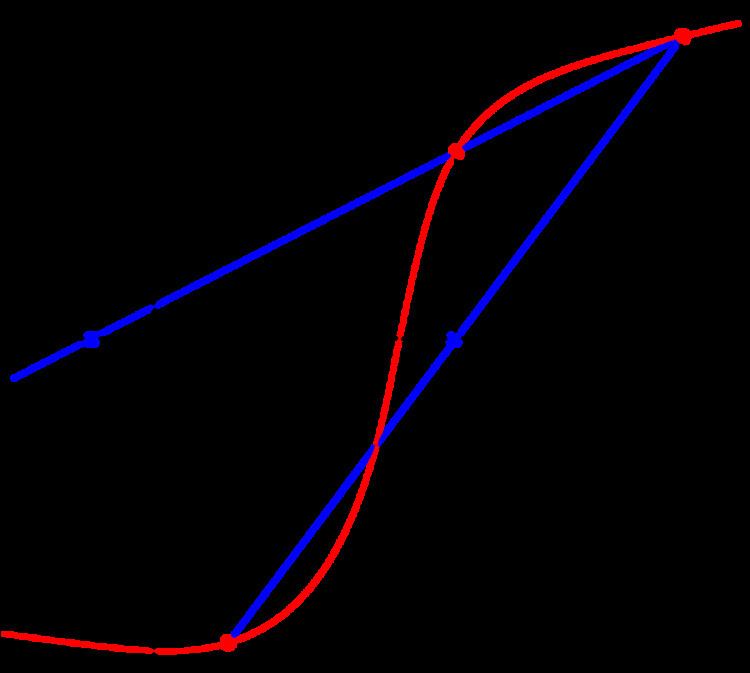 | ||
In numerical analysis, the secant method is a root-finding algorithm that uses a succession of roots of secant lines to better approximate a root of a function f. The secant method can be thought of as a finite difference approximation of Newton's method. However, the method was developed independently of Newton's method, and predates it by over 3,000 years.
Contents
The method
The secant method is defined by the recurrence relation
As can be seen from the recurrence relation, the secant method requires two initial values, x0 and x1, which should ideally be chosen to lie close to the root.
Derivation of the method
Starting with initial values x0 and x1, we construct a line through the points (x0, f(x0)) and (x1, f(x1)), as demonstrated in the picture on the right. In slope-intercept form, this line has the equation
We find the root of this line – the value of x such that y = 0 – by solving the following equation for x:
The solution is
We then use this new value of x as x2 and repeat the process using x1 and x2 instead of x0 and x1. We continue this process, solving for x3, x4, etc., until we reach a sufficiently high level of precision (a sufficiently small difference between xn and xn - 1).
Convergence
The iterates
is the golden ratio. In particular, the convergence is superlinear, but not quite quadratic.
This result only holds under some technical conditions, namely that
If the initial values are not close enough to the root, then there is no guarantee that the secant method converges. There is no general definition of "close enough", but the criterion has to do with how "wiggly" the function is on the interval
Comparison with other root-finding methods
The secant method does not require that the root remain bracketed like the bisection method does, and hence it does not always converge. The false position method (or regula falsi) uses the same formula as the secant method. However, it does not apply the formula on
The recurrence formula of the secant method can be derived from the formula for Newton's method
by using the finite difference approximation
The secant method can be interpreted as a method in which the derivative is replaced by an approximation and is thus a Quasi-Newton method. If we compare Newton's method with the secant method, we see that Newton's method converges faster (order 2 against α ≈ 1.6). However, Newton's method requires the evaluation of both
Generalizations
Broyden's method is a generalization of the secant method to more than one dimension.
The following graph shows the function f in red and the last secant line in bold blue. In the graph, the x-intercept of the secant line seems to be a good approximation of the root of f.
A computational example
The Secant method is applied to find a root of the function f(x) = x2 − 612. Here is an implementation in the Matlab language (from calculation, we expect that the iteration converges at x = 24.7386):
